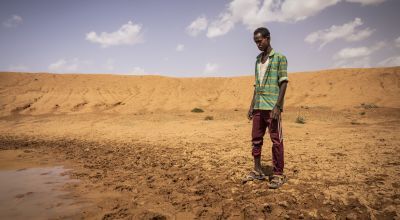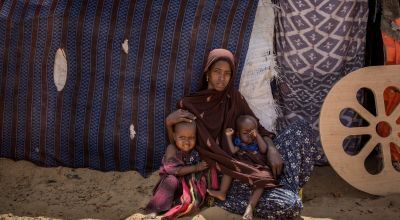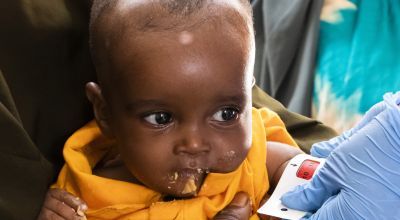
Read our 2023 annual report

Knowledge Hub
During the 1992 famine the Somali town of Baidoa earned the grim title among Somalis of “the city of death”. Thirty years later, it’s again the epicentre of the worst drought in four decades to hit the Horn of Africa.
International aid organisations and the Somalia government are working tirelessly to prevent the drought tipping over into a humanitarian catastrophe.
In 1992 Baidoa was a town of 40,000 people. At the height of the famine, a donkey and cart used to tour the town each morning collecting the dead for burial in mass graves. Today, it’s a city of over 700,000 people — 400,000 of whom are displaced people, living in camps of domed tents made from branches, strips of cloth and plastic sheeting.
People are fleeing the surrounding countryside in droves. After two years of little or no rain, their farms are destroyed and their livestock are dead. They know international humanitarian organisations like Concern and the Somalia government are providing assistance in Baidoa and they are desperate.
Death and fear have also returned to Baidoa. Camp leaders point to informal graveyards within their sprawling settlements on patches of ground between tents, near the latrines or on the outskirts of the informal settlements.
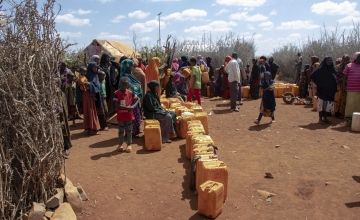
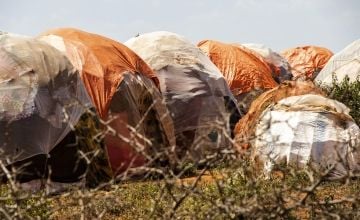
At Edaan Qaboobe camp on the edge of the town, camp leader Issac brings us to a patch of ground where we count 14 graves. He points across to the perimeter of the camp where he says another 35 people are buried. All are children aged under seven, he notes, who died from malnutrition, diarrhoea or measles.
At Baidoa’s regional hospital some of the sickest children are treated within its stablilisation unit. Little Aamun* (2) is one of 14 children being treated there on the day we visit. She lies still, staring at a far-away spot, as the visitors pass her bed. It is only when she whimpers, trying to kick the light sheet off herself, that it becomes clear just how ill she is.
The infant is literally skin and bones. Her arms and legs are pencil thin, the skin stretched tightly over her torso revealing every rib and her shoulder blades. Her hair is wispy and fine.
Aamun’s mother, Hadiyo*, picks her up and wraps a sheet around her. She has already lost one child during the drought and hugs Aamun preciously. The two-year-old was admitted five days earlier, weighing 5.8kg (12.7 lbs), the average weight of a healthy three-month-old. Her middle upper arm circumference measurement was 8.5 cm — a measure which indicated that she was experiencing life-threatening levels of malnutrition.
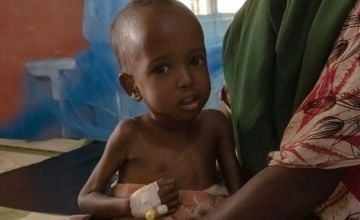
Like many of the other very sick infants in the ward, she is battling malnutrition, complicated by another illness. Aamun recently had measles. Others are suffering from whooping cough or diarrhoea. “This is measles and hunger,” Hadiyo says. “But she is healthier now.”
Hadiyo has three other children, all aged under five. Her fifth child died of measles, just five days after birth. She is registered for a food voucher scheme and is confident this will mean her children will be fed.
Hadiyo and her family left Wadijir, 90kms away, after their 20 goats and five cows died as a result of the drought. “It’s likely we will stay in Baidoa because there is nothing left for us there,” she said.
Measles swept through some of the local camps in recent months. Poor vaccine coverage, combined with weak immunity due to hunger, is a lethal combination. Many of those arriving in the city are unvaccinated and move into overcrowded conditions.
Health workers at Danwaidaag mother and child clinic in the town’s suburbs, funded by Concern and run by its local partners GREDO, had vaccinated 53 children by noon on the day we visited. Two measles vaccination campaigns so far this year — one in April and the second in October — were having an impact, the clinic’s nurse-in-charge Abdullah Malin Bilow said.
At the clinic’s screening centre, Nala has brought her son, Rahman (12 months). “He has been vomiting and has diarrhoea for the last week,” she said. He weighs just 5.9 kg (13lbs) and is diagnosed as severely acutely malnourished. “He had measles, but is better now,” she said. Four young children in the displacement camp she is living in died of measles in the last month.
It’s likely we will stay in Baidoa because there is nothing left for us there
Nala and her husband moved to Baidoa four months ago. She and her husband were both casual farm workers. Without rain, the farms were parched and in many cases abandoned by their owners. “There is nothing there for us, so we came here for help, there is not a day we live without worry.”
Aid workers fear that 2023 will be an even more difficult year for Somalia, especially the next three months – typically the driest time of the year. Experts from the Integrated Food Security Phase Classification (IPC) have warned that 6.3 million Somalis will experience acute food shortages during this period, including 322,000 people who will experience famine-like conditions. Between April and June, this will rise to 722,000 Somalis facing famine-like conditions.
The IPC Famine Review Committee, a panel of independent food security and nutrition experts, warned last week that without the scaling up of the humanitarian response — especially in areas such as water, sanitation, health and nutrition — “famine is a strong possibility, and not only in April to June but well beyond that.”
As part of its emergency drought response, Concern teams are providing a range of supports for communities, including cash payments, water trucking, constructing toilets in displacement camps and repairing broken boreholes. They are operating outreach clinics and distributing hygiene materials such as jerry cans and soap.
Despite the huge amounts of donor funding for Somalia, its humanitarian response plan is just 53% funded, with much of that being donated in recent months.
“We have spent a long time saying that the time to act is now — now has passed,” Concern’s Somalia Programme Director Richard Nunn said. “Additional funding is urgently needed if aid workers are to protect and save lives. The more resources we have, the more people we can help.”
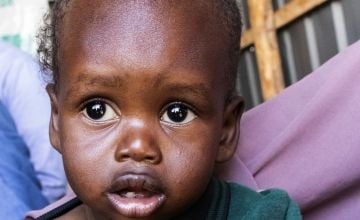
In Baidoa, the lack of funding means that 50% of new arrivals currently receive no assistance. A number of cash transfer payment schemes (where vulnerable families get a cash payment) are due to finish in January when UN funding ends.
Ireland has a special place in the hearts of Somali people, and especially those in Baidoa. When introduced as being Irish, several people told me they were educated at a Concern-run school (Concern ran all schools in Baidoa from 1993 to 1995). They also recall President Mary Robinson’s visit to the town in 1992.
Dr Aballabi Jasref, the medical coordinator at the Bay Regional Hospital, said he was an orphan in a Concern-run orphanage in Baidoa, visited by President Robinson. “Mary Robinson shone a spotlight on Somalia’s need and the world responded. We will never forget that.”
What Somalia needs again, is that world attention and funding, if lives are to be saved and suffering is to be avoided.
*Names have been changed



